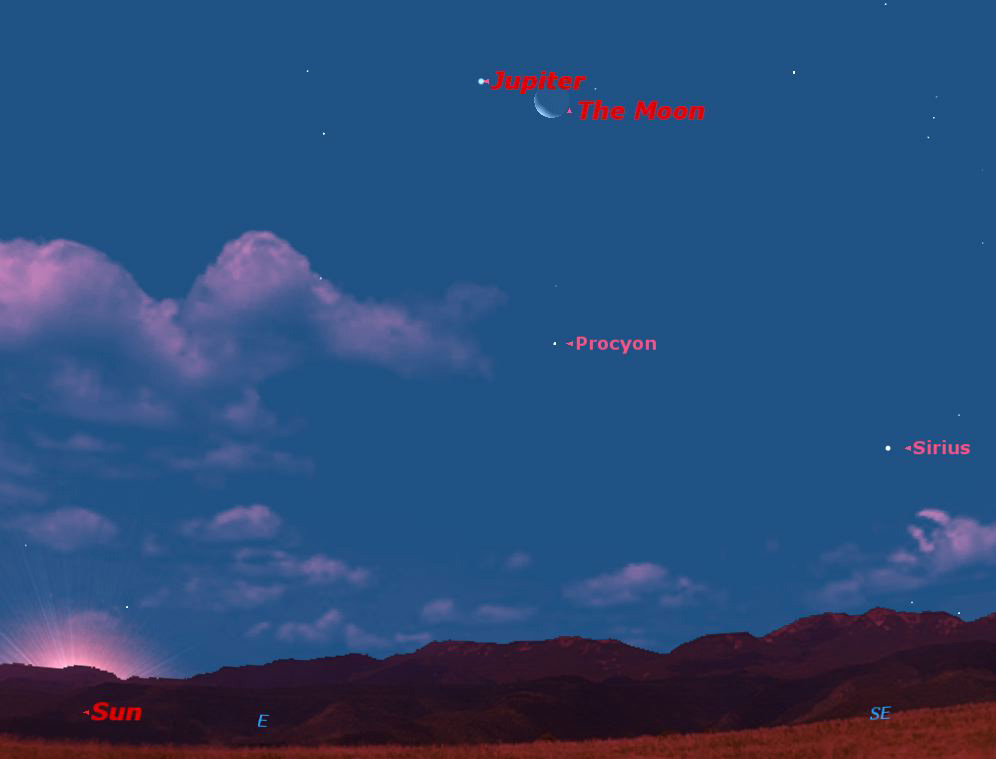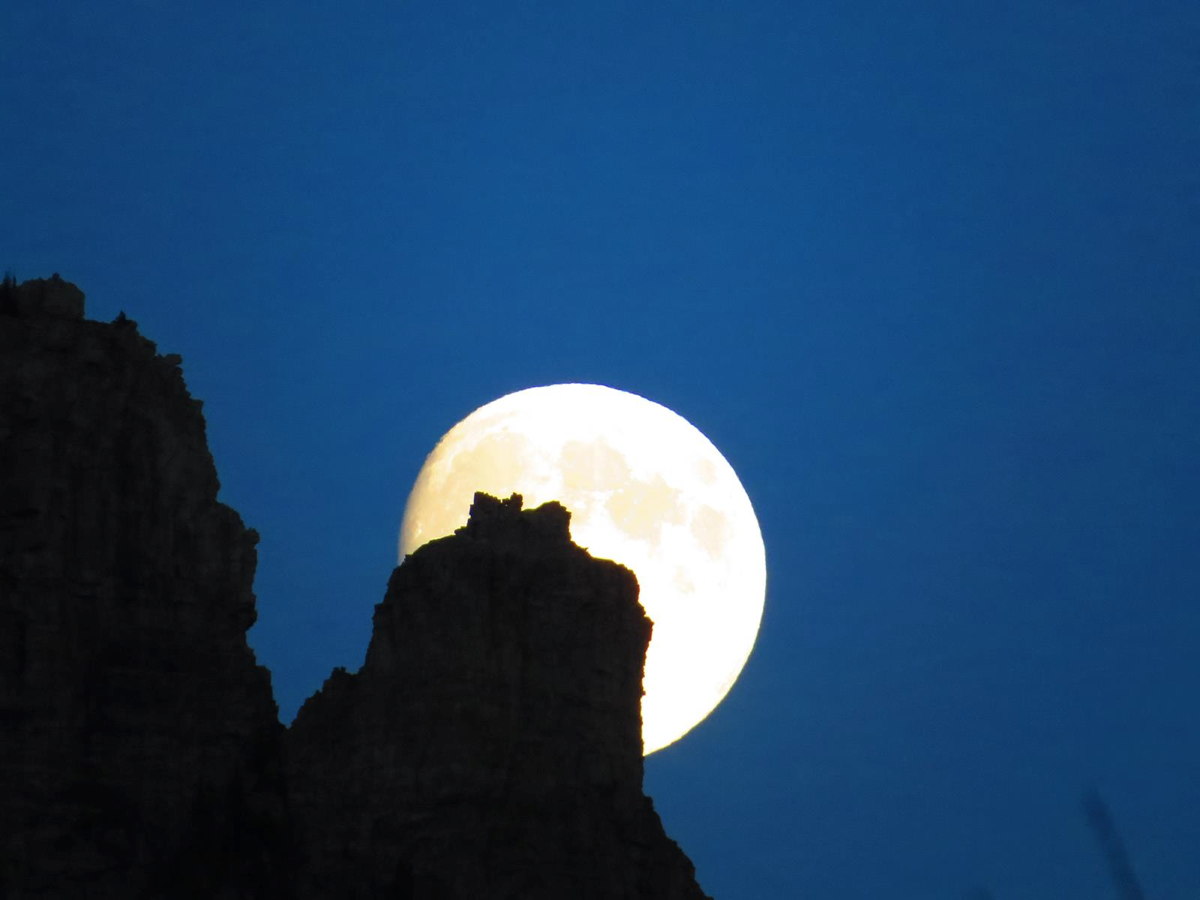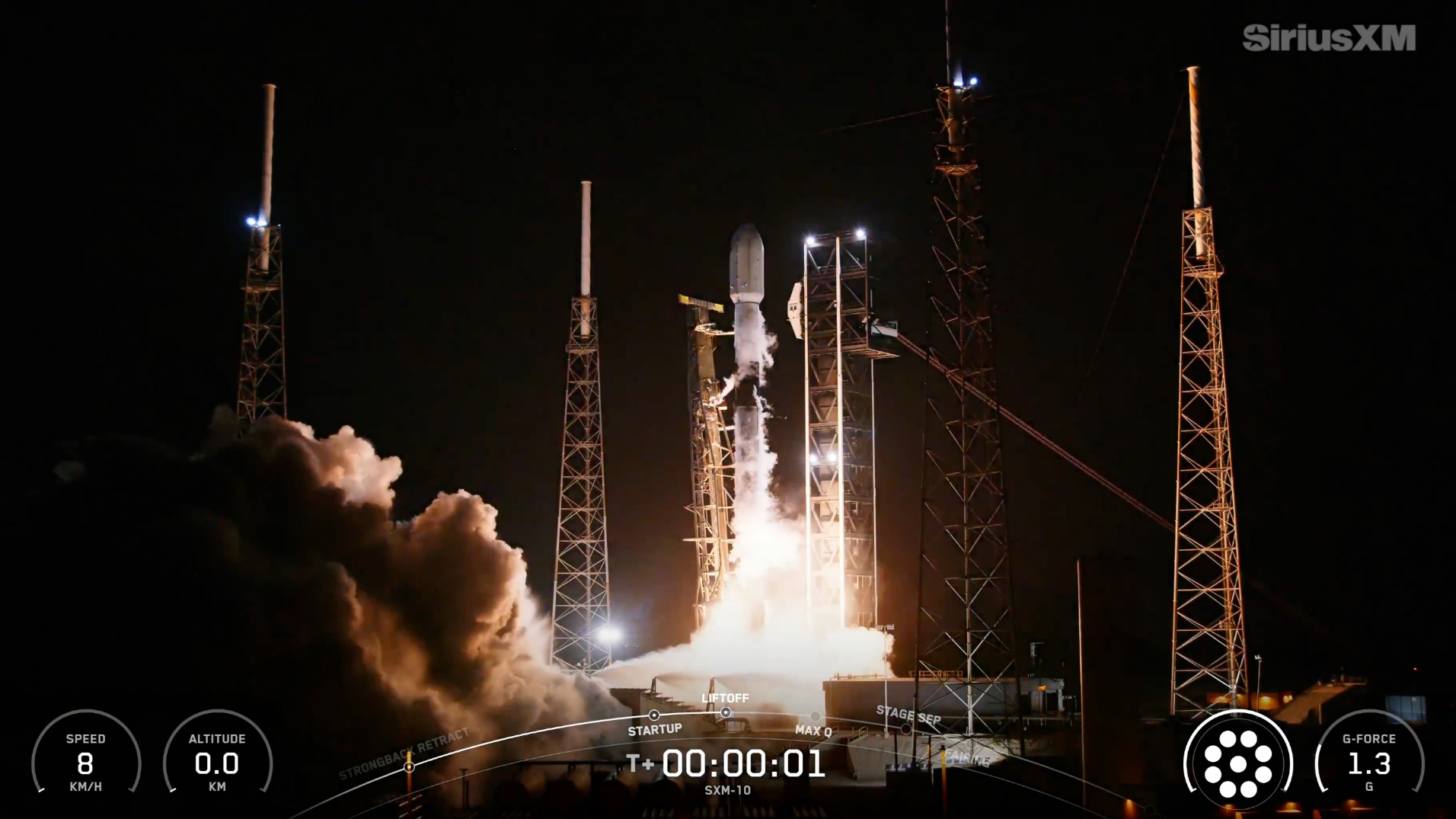
As we kick off the Labor Day holiday weekend, early on Saturday (Aug. 31) during the predawn hours, check out the east-northeast sky anytime after 2 a.m. local daylight time and your eyes will immediately be drawn to the two brightest objects in the sky at that early hour.
You will see the moon, less than five days before new phase: a slender crescent, just 23 percent illuminated by the sun with the rest of its disk possibly glowing with a faint blue-gray hue. That's Earthshine, a phenomenon caused by sunlight reflected off Earth and then back out into space toward the moon. If you have binoculars or a small low-power telescope, be sure to check out the moon and it will appear as a weirdly illuminated ball suspended in space and very much three-dimensional.

To the left of this lunar ball will be a dazzling, silvery non-twinkling "star." However, this is not a star, but a planet — the biggest in our solar system — Jupiter. This planet shines with nearly double the brightness of Sirius, the brightest star in the night sky. The two will be separated by roughly 5 degrees, or half the width of your clenched fist held at arm's length. [Best Night Sky Events of August 2013 (Sky Maps)]
Jupiter, the king of the planets, is in the constellation of Gemini between the pair of legs that mark the twin brothers — Castor is the one on the right with the short legs and Pollux is the one on the left with the longer legs.
"Big Jupe" rises around 1:50 a.m. local daylight time, but its rising time will be getting earlier by an average of 3.3 minutes a day, so that a month from now it will be rising just 10 minutes past the witching hour of midnight.
The giant planet, shining brightly low in the east with its four moons visible in small telescopes, will provide a dramatic end to many a late-night observing session as we get ready to move into the chilly nights of September.
Indeed, if you train a telescope on Jupiter you will see all four of the Galilean moons on one side of the planet. Moving out from Jupiter will be Callisto, Io, Ganymede and Europa. Add our own satellite, and that's five moons in the sky for the price of one!
Get the Space.com Newsletter
Breaking space news, the latest updates on rocket launches, skywatching events and more!
Joe Rao serves as an instructor and guest lecturer at New York's Hayden Planetarium. He writes about astronomy for Natural History magazine, the Farmer's Almanac and other publications, and he is also an on-camera meteorologist for News 12 Westchester, N.Y.
Join our Space Forums to keep talking space on the latest missions, night sky and more! And if you have a news tip, correction or comment, let us know at: community@space.com.

Joe Rao is Space.com's skywatching columnist, as well as a veteran meteorologist and eclipse chaser who also serves as an instructor and guest lecturer at New York's Hayden Planetarium. He writes about astronomy for Natural History magazine, Sky & Telescope and other publications. Joe is an 8-time Emmy-nominated meteorologist who served the Putnam Valley region of New York for over 21 years. You can find him on Twitter and YouTube tracking lunar and solar eclipses, meteor showers and more. To find out Joe's latest project, visit him on Twitter.
